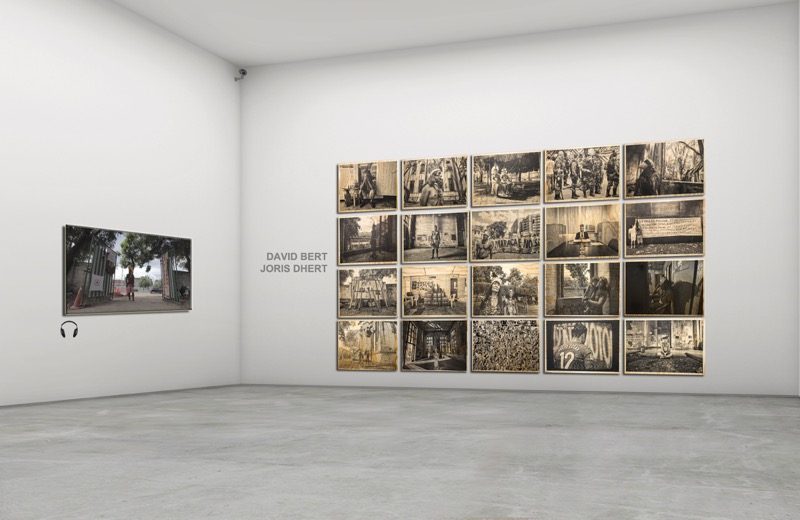The Social Art Award 2017
Can art change the world?
Under this question, the Institute for Art and Innovation e.V. had launched the first Social Art Award in 2017. Artists and cultural actors of all areas were invited to apply with their work to the field of social art. Artists from 131 countries responded with extraordinary works and projects.
On September 5, 2017, the three winners Lino Tonelotto from France, Quek Jia Qi from Singapore and Diogo da Cruz from Portugal were honored, and exhibited at WHITECONCEPTS Gallery in Berlin. They demonstrated with their politically engaged works that art can make current events visible and tangible. This is an important understanding for bringing forward the debate and thus a social change.
Learn more about it and get your copy of the Social Art Award Book (116 pages, English) featuring the Top50 artists.
To Order:
Printed Version (Softcover) – 25 EUR excl. delivery
E-Version – Free
See here the best entries:
..And The Trees Will Speak Again
David Bert Joris Dhert
Watch the complete artwork here: http://www.eixoarte.com.br/coletiva-2017-fotografia-e-arte-digital/david-bert-joris-dhert/ ..And The Trees Will Speak Again narrates, in 20 photographic works and one video installation (02'57"), the peace and tension during the last moments of the indigenous occupation called Aldeia Maracanã in Rio de Janeiro, Brazil, an occupation that started in 2006 and came to an abrupt end in 2013, when the urban military troops stormed the community. Elaborated on industrialised wood instead of photographic paper, the installation wants to invite the viewer for a broader reflection on indigenous land, one that goes beyond the discussion of land ownership and goes in search of the roots of the outcry of indigenous Brazil that is facing deforestation and persecution in the war for territory against the major commercial enterprises in the country. The story starts in 2013 in Rio de Janeiro, Brazil. As the 2014 FIFA World Cup approaches, the urban indigenous community of Rio tries to hold on to the last piece of indigenous land in the city. The ground includes an old colonial building that in 1910 was donated to the indigenous and that ever since has been used as central meeting place for indigenous of diverse ethnicities coming from all over Brazil. It became the symbol for indigenous memory and ancestrality in Brazil. Unfortunately located next to the world famous Maracanã football stadium, this land is being claimed for the construction of tourist facilities for the World Cup and the Olympic Games. As tension rises and no agreement is being reached, the local government has the indigenous community evicted in a turbulent military operation on March 22, 2013. With no valuable housing alternative being given, the indigenous now live spread out over the poorest favelas of Rio. I have been portraying and living with the indigenous on the photographs since 2012. The urban indigenous call themselves the invisibles. Many of them were forced to flee from conflicts with agriculture and mining companies invading their home grounds in the interior of Brazil. This phenomenon has half of Brazil's indigenous population living in the cities nowadays, many of them arrive unschooled and seen as useless for 21st century's specified labour market, many of them even unable to speak Portuguese. So they enter a modern city on the lowest step of the social ladder and with no government assistance whatsoever. Once in the city, many hide their indigenous identity out of shame or fear for being stigmatised. So they become invisible. These photographs tell the story of the last days of the indigenous occupation of Aldeia Maracanã. What for the indigenous had started out as a hopeful road towards respect for indigenous identity in the city gradually made place for government involvement, suspicion, fights and finally a violent breaking apart of the community. The occupation came to an end in March 2013 after a turbulent eviction operation by the urban military troops with guns, gas bombing, trained dogs, helicopters and a supersonic weapon that was meant for anti-terrorist attacks during the World Cup and Olympics.
Watch the complete artwork here: http://www.eixoarte.com.br/coletiva-2017-fotografia-e-arte-digital/david-bert-joris-dhert/ ..And The Trees Will Speak Again narrates, in 20 photographic works and one video installation (02'57"), the peace and tension during the last moments of the indigenous occupation called Aldeia Maracanã in Rio de Janeiro, Brazil, an occupation that started in 2006 and came to an abrupt end in 2013, when the urban military troops stormed the community. Elaborated on industrialised wood instead of photographic paper, the installation wants to invite the viewer for a broader reflection on indigenous land, one that goes beyond the discussion of land ownership and goes in search of the roots of the outcry of indigenous Brazil that is facing deforestation and persecution in the war for territory against the major commercial enterprises in the country. The story starts in 2013 in Rio de Janeiro, Brazil. As the 2014 FIFA World Cup approaches, the urban indigenous community of Rio tries to hold on to the last piece of indigenous land in the city. The ground includes an old colonial building that in 1910 was donated to the indigenous and that ever since has been used as central meeting place for indigenous of diverse ethnicities coming from all over Brazil. It became the symbol for indigenous memory and ancestrality in Brazil. Unfortunately located next to the world famous Maracanã football stadium, this land is being claimed for the construction of tourist facilities for the World Cup and the Olympic Games. As tension rises and no agreement is being reached, the local government has the indigenous community evicted in a turbulent military operation on March 22, 2013. With no valuable housing alternative being given, the indigenous now live spread out over the poorest favelas of Rio. I have been portraying and living with the indigenous on the photographs since 2012. The urban indigenous call themselves the invisibles. Many of them were forced to flee from conflicts with agriculture and mining companies invading their home grounds in the interior of Brazil. This phenomenon has half of Brazil's indigenous population living in the cities nowadays, many of them arrive unschooled and seen as useless for 21st century's specified labour market, many of them even unable to speak Portuguese. So they enter a modern city on the lowest step of the social ladder and with no government assistance whatsoever. Once in the city, many hide their indigenous identity out of shame or fear for being stigmatised. So they become invisible. These photographs tell the story of the last days of the indigenous occupation of Aldeia Maracanã. What for the indigenous had started out as a hopeful road towards respect for indigenous identity in the city gradually made place for government involvement, suspicion, fights and finally a violent breaking apart of the community. The occupation came to an end in March 2013 after a turbulent eviction operation by the urban military troops with guns, gas bombing, trained dogs, helicopters and a supersonic weapon that was meant for anti-terrorist attacks during the World Cup and Olympics.



